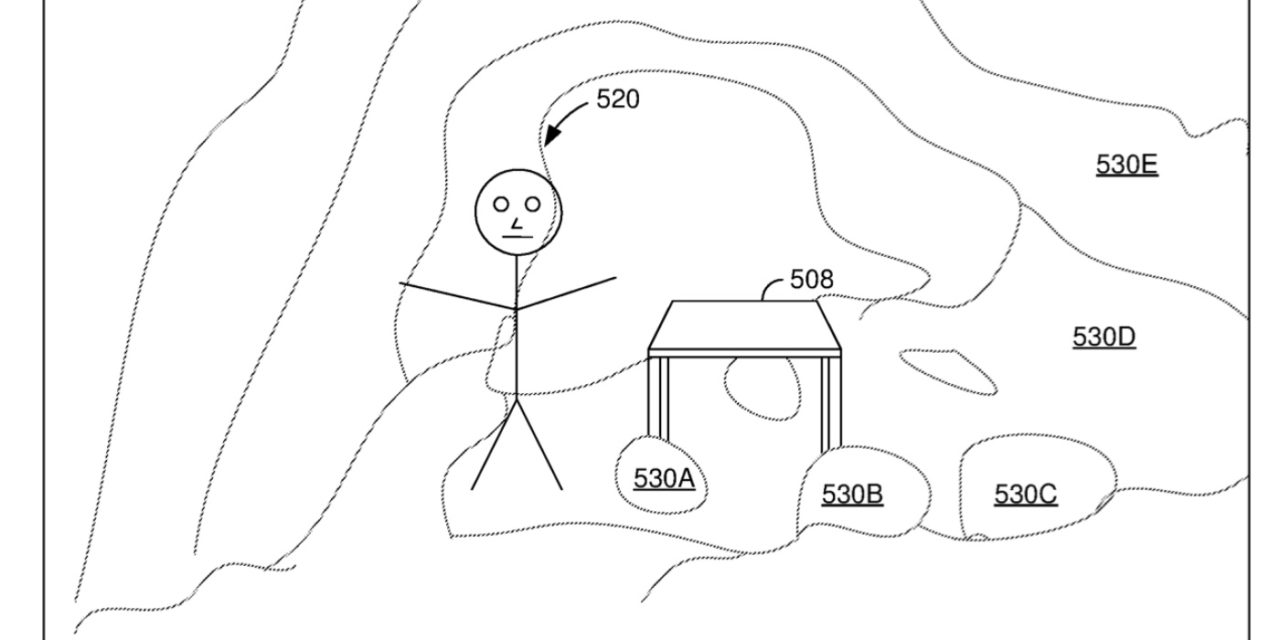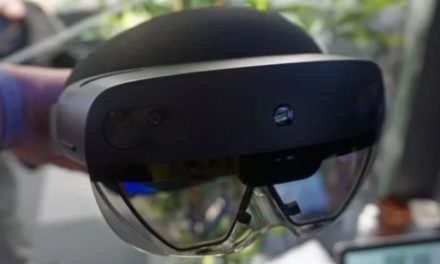Apple has been granted a patent (number 11,363,378) for a “method and device for sound processing for a synthesized reality setting.” It involves the rumored “Apple Glasses,” a mixed-reality device.
About the patent
The patent relates to sound processing for a synthesized reality setting, and in particular, to systems, methods, and devices for transforming a real sound into a virtual sound based on an acoustic reverberation property of a synthesized reality setting.
A physical setting refers to a world that individuals can sense and/or with which individuals can interact without assistance of electronic systems. In contrast, a synthesized reality (SR) setting refers to an entirely or partly computer-created setting that individuals can sense and/or with which individuals can interact via an electronic system such as a head-mounted display (HMD).
In SR, a subset of an individual’s movements is monitored, and, responsive thereto, one or more attributes of one or more virtual objects in the SR setting is changed in a manner that conforms with one or more physical laws. For example, a SR system may detect an individual walking a few paces forward and, responsive thereto, adjust graphics and audio presented to the individual in a manner similar to how such scenery and sounds would change in a physical setting. Modifications to attribute(s) of virtual object(s) in a SR setting also may be made responsive to representations of movement (e.g., audio instructions).
What’s more, an individual may interact with and/or sense a SR object using any one of his senses, including touch, smell, sight, taste, and sound. For example, an individual may interact with and/or sense aural objects that create a multi-dimensional (e.g., three dimensional) or spatial aural setting, and/or enable aural transparency.
Apple wants its Apple Glasses to offer multi-dimensional or spatial aural settings provide an individual with a perception of discrete aural sources in multi-dimensional space. Aural transparency selectively incorporates sounds from the physical setting, either with or without computer-created audio. In some SR settings, an individual may interact with and/or sense only aural objects.
One example of SR is virtual reality (VR). A VR setting refers to a simulated setting that is designed only to include computer-created sensory inputs for at least one of the senses. A VR setting includes multiple virtual objects with which an individual may interact and/or sense. An individual may interact and/or sense virtual objects in the VR setting through a simulation of a subset of the individual’s actions within the computer-created setting, and/or through a simulation of the individual or his presence within the computer-created setting.
Another example of SR is mixed reality (MR). A MR setting refers to a simulated setting that is designed to integrate computer-created sensory inputs (e.g., virtual objects) with sensory inputs from the physical setting, or a representation thereof. On a reality spectrum, a mixed reality setting is between, and does not include, a VR setting at one end and an entirely physical setting at the other end.
In some MR settings, computer-created sensory inputs may adapt to changes in sensory inputs from the physical setting. Also, some electronic systems for presenting MR settings may monitor orientation and/or location with respect to the physical setting to enable interaction between virtual objects and real objects (which are physical elements from the physical setting or representations thereof). For example, a system may monitor movements so that a virtual plant appears stationery with respect to a physical building.
Summary of the patent
Here’s Apple’s abstract of the patent: “In one implementation, a method of transforming a sound into a virtual sound for a synthesized reality (SR) setting is performed by a head-mounted device (HMD) including one or more processors, non-transitory memory, a microphone, a speaker, and a display. The method includes displaying, on the display, an image representation of a synthesized reality (SR) setting including a plurality of surfaces associated with an acoustic reverberation property of the SR setting.
“The method includes recording, via the microphone, a real sound produced in a physical setting. The method further includes generating, using the one or more processors, a virtual sound by transforming the real sound based on the acoustic reverberation property of the SR setting. The method further includes playing, via the speaker, the virtual sound.”
About Apple Glasses
When it comes to Apple Glasses, such a device will almost certainly arrive in mid-to-late 2023. It will be a head-mounted display. Or may have a design like “normal” glasses. Or it may be eventually be available in both. The Apple Glasses may or may not have to be tethered to an iPhone to work. Other rumors say that Apple Glasses could have a custom-build Apple chip and a dedicated operating system dubbed “rOS” for “reality operating system.”
Article provided with permission from AppleWorld.Today




